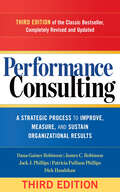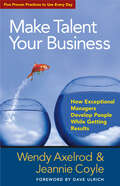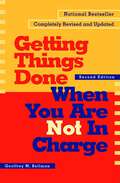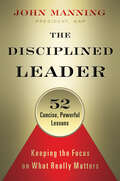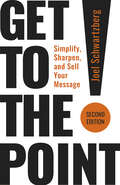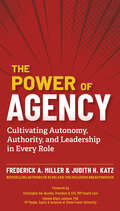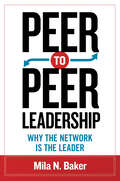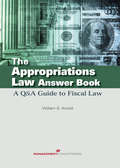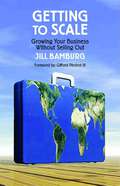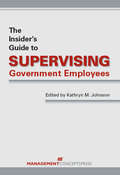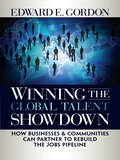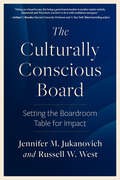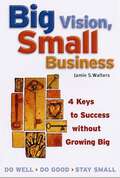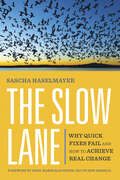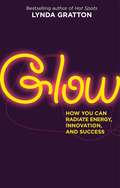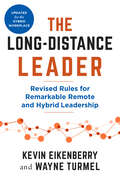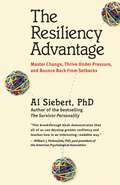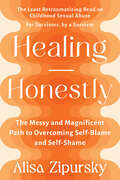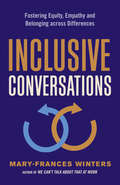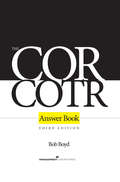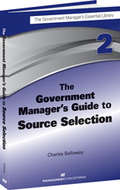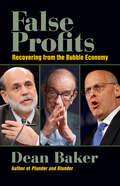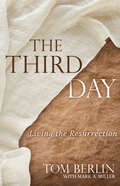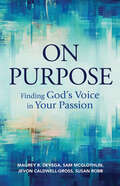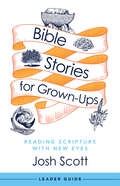- Table View
- List View
Performance Consulting: A Strategic Process to Improve, Measure, and Sustain Organizational Results
by Dana Gaines Robinson James C. Robinson Jack J. Phillips Patricia Pulliam Phillips Dick HandshawNEW EDITION, REVISED AND UPDATEDIn America, organizations spend $175 billion in training initiatives and more than $500 billion in human resource solutions every year yet often have little to show for it. One reason is that people "jump to solutions" before they identify the causes of the problem. Performance consultants are effective because they partner with clients to clarify business goals and determine root causes for gaps between desired and current results. Only then are specific solutions agreed upon and implemented. This third edition of the classic book that introduced performance consulting adds a wealth of new material. There are new case examples throughout and four new chapters providing detailed steps for measuring results from performance consulting initiatives on five different levels, including ROI. The book includes a never-before-published Alignment and Measurement Model, allowing you to connect organizational needs and performance consulting initiatives designed to address those needs with the appropriate level of measurement. This remains a profoundly practical book, featuring tools, models, and checklists. It will enable you to make a difference in your organization that is valued, measurable, and sustainable.
Make Talent Your Business: How Exceptional Managers Develop People While Getting Results
by Jeannie Coyle Wendy AxelrodDespite considerable investment in resources and tools, many companies struggle to meet the demand for the talent they require. Make Talent Your Business\u201d gets to the heart of the matter: Managers themselves are in the best position to help people learn from experience (the uncontested major source of development) and shows managers how to do it by using the five practices that work for managers who are exceptional at building talent. This set of practices goes well beyond the usual managerial coaching and performance management. It moves the focus from performance today to development of skills that truly "raise the game" of employees—skills such as in-the-moment judgment, customer relationship building and collaborative decision-making. Managers who grow talent enhance their own reputations and get better results, retain people, attract talent and make their organizations more agile and capable to deal with future challenges.
Getting Things Done When You Are Not in Charge
by Geoffrey M BellmanYou are not in charge and you want to make a difference: that is the dilemma. You may not know who is in charge in today's changing, temporary, and virtual organizations, but you know you are not! You are searching for ways to contribute through the work you do and gain some personal satisfaction in the process. This book can help you do just that. In this new edition of his classic book, Geoff Bellman shows readers how to make things happen in any organization regardless of their formal position. The new edition has been written for a wider audience, including people in both the for-profit and not-for-profit sectors, paid and volunteer workers, managers and individual contributors, contract and freelance workers. More than seventy percent of the material is brand new, including new examples, new chapters, new exercises, and much more.
The Disciplined Leader: Keeping the Focus on What Really Matters
by John ManningWhat do the best leaders have in common? As president of MAP, John Manning should know. MAP has helped tens of thousands of top executives accelerate their leadership and management performance. Manning says the answer is one word: discipline. But for Manning, discipline has a very specific meaning. All leaders have scores of things they could do. But a disciplined leader is one who identifies and focuses on the Vital Few: the 20 percent of activities that will drive 80 percent of the results. And the results that are most important are those tied to the organization's most precious asset: its people.The Disciplined Leader offers fifty-two succinct lessons to help you home in on your own Vital Few in three critical areas: leading yourself, leading your team, and leading your organization. Each lesson comes with recommended tactics and practical "Take Action!" tips for implementing it, so there are literally hundreds of pieces of must-know, time-tested advice here. The chapters are self-contained, so you can read them in any order and come back to the ones that resonate with you—your own Vital Few! This is a hands-on, nuts-and-bolts guide to leadership practice that's built to inspire action, drive change, and achieve results.
Get to the Point!, Second Edition: Simplify, Sharpen, and Sell Your Message
by Joel SchwartzbergDeliver razor-sharp points in all of your work communications! This updated classic enables you to captivate any audience, create meaningful impact, and make your words matter.Every time you communicate, you're trying to move someone to feel, think, and act. You're trying to make a point. But very few communicators-regardless of their purpose or position-know their points, have true points, or even understand what a point is, rendering themselves pointless.In this expanded second edition of the bestselling Get to the Point!, Joel Schwartzberg draws on his decades of experience as a strategic communications executive and public speaking coach to deliver a masterclass in high-impact communications for the digital age. The new edition features a substantial amount of new content, including surprising research, real-world insight, and actionable tips that meet the modern needs of professionals up and down the organizational chart.Using his trademark encouraging and often humorous voice, Schwartzberg helps you:•Understand the Power of Points: Learn how points outperform topics, themes, and observations.•Identify and Elevate Your Key Points: Create impactful speeches and slide presentations, emails and work chats, and Zoom and in-person meeting communications•Distill Complex Ideas: Transform complicated concepts into crystal-clear messages.•Boost Leadership Perceptions: Enhance impressions of competence and confidnce.•Hook Audiences: Start and finish with compelling openings and closings.•Tell Impactful Stories: Use stories, examples, and data in a way that highlights your points, not distract from them.•Conquer Public Speaking Jitters: Use proven techniques to stay calm and in control•Leverage AI Tools: Use artificial intelligence to support-not replace-effective communication•Avoid Common Pitfalls: Sidestep the landmines that derail most communicators.Whether you're a C-suite executive, salesperson, scientist, or student, Get to the Point! is a blueprint for evolving your written and spoken communications from informing to inspiring and pointless to powerful.Don't just share ideas and make an impression. Champion your points and make a difference!
The Power of Agency: Cultivating Autonomy, Authority, and Leadership in Every Role
by Judith H. Katz Frederick A. MillerTake ownership of your work and unleash the power of agency in your organization!To help give employees the power, influence, and voice necessary to truly excel in their workplace, organizational development experts Miller and Katz reveal the importance of agency and offer practical advice on how to achieve it.With more knowledge workers entering the workplace, many are being stifled by traditional employee-manager relationships that hamper their ability to fully contribute and feel engaged at work. And in a constantly changing and competitive world of work, organizations must evolve to keep up with worker satisfaction or else face a decrease in performance and loss in talent.The solution? Enabling your employees to exercise their individual agency in the workplace. Through an actionable roadmap that highlights common pitfalls and practical steps necessary for establishing a culture of greater agency, this book will provide individuals, teams, managers, and leaders with concrete ways to clarify their current level of agency and identifies specific actions they can take to exercise greater agency.
Peer-to-Peer Leadership: Why the Network Is the Leader
by Mila N. BakerOur leadership models are stuck in an Industrial Age, top-down mentality. But in our complex, data-drenched, 24/7 world, there is simply too much information coming from too many different directions too quickly for any one leader or group to stay on top of it. Hierarchy is breaking down everywhere—why should leadership be any different? Inspired by the peer-to-peer model of computing used in social networking and crowdsource technologies, Mila Baker shows a new way to lead. Organizations, she says, must become networks of "equipotent" nodes of power—peer leaders. The job of the leader is now to set the overall goals and direction and optimize the health of that network, not tell it what to do. In these organizations, leadership roles shift rapidly to fit the needs of any given situation. Information flows freely so those who need it can find it easily and act on it immediately. Feedback becomes an organic part of the workflow, enabling rapid course corrections. Baker shows how companies like Gore and Herman Miller have achieved long-term success practicing these principles and provides a structure that any organization can adapt to build flexibility, resiliency, and accountability.
The Appropriations Law Answer Book: A Q&A Guide to Fiscal Law
by William G. Arnold CDFM-A, CCAGet the Complete Answers to Your Appropriations Law Questions Scrutiny of the use of federal funds—and the people handling those funds—has never been greater. Yet federal personnel often don't know all the rules. What might seem like a logical, efficient action could very well be illegal. Now, there is an easy-to-use, straightforward guide to help everyone involved with appropriated funds. The Appropriations Law Answer Book: A Q&A Guide to Fiscal Law is the "go-to" resource for answers to fiscal law questions that arise in the federal workplace. This book condenses the content of the 2,000+ page Government Accountability Office's Principles of Federal Appropriations Law (the "Redbook"), providing a pertinent and usable resource for everyone who has responsibility for federal funds. Arranged in question-and-answer format, this concise book covers the questions that most often surface in agencies. Subject area groupings make finding the right answer quick and clear. Coverage includes critical information on: • How to prevent violations of the Antideficiency Act • Obligation of appropriations • Intragovernmental transactions, grants and agreements • Nonappropriated fund instruments Even personnel with the purest of intentions can run afoul of the many laws, rules, regulations, and decisions that govern the proper use of government funds. Don't be one of them. Get the resource you can trust: The Appropriations Law Answer Book. Plus! The book also includes a handy glossary. Contents Overview of Appropriations Law • Purpose • Time • Amount (The Antideficiency Act) • Obligation of Appropriations • Intragovernmental Transactions • Continuing Resolutions • Accountability and Liability of Individuals • Grants and Agreements • Nonappropriated Fund Instrumentalities • Can Your Agency Use Appropriated Funds for Meals and Light Refreshments? • Glossary About the Author William G. Arnold, CDFM-A, author of The Antideficiency Act Answer Book, Performance Budgeting—What Works, What Doesn't, and The Prompt Payment Act Answer Book, worked with the Department of Defense for 34 years, over 25 of which he spent in financial management. He has held positions as budget officer, director of resource management, director of disbursing, and entitlements director with the Air Force and the Defense Finance and Accounting Service.
Getting to Scale: Growing Your Business Without Selling Out
by Jill BamburgBen & Jerry's. Stonyfield Farm. The Body Shop. Tom's of Maine. All leaders in the socially responsible business movement--and all eventually sold to mega-corporations. Do values-driven businesses have to choose between staying small, selling off, or selling out? Jill Bamburg says no. Based on intensive interviews with more than thirty growth-oriented, mission-driven entrepreneurs--including American Apparel, Give Something Back, Wild Planet Toys, Organic Valley Family of Farms, and Village Real Estate--her book explodes the myths of scale from both ends of the spectrum. She debunks both the limiting "small is beautiful" approach as well as the "you have to sell out to grow" mandate.
The Insider's Guide to Supervising Government Employees
by Kathryn M. JohnsonEssential Guidance for New and Seasoned Supervisors!Effective supervisors are critical to the future of government. The knowledge, skills, and behaviors required to be an effective supervisor can come only through continuous learning and development.The Insider's Guide to Supervising Government Employees brings together the experiences of diverse supervisors from all aspects of government to offer a rich resource of lessons learned. Whether you are new to the supervisory role or a seasoned supervisor working to improve your and your staff's performance, this book is your practical, go-to guide.Starting with a seven-step, 38-item Supervisor Readiness Assessment, The Insider's Guide helps you determine your readiness to supervise and identify areas you would like to learn more about. You can select a single topic that addresses a particular opportunity you are considering or you can read the book cover to cover to get a fuller view of what it means to be an effective supervisor.As a government supervisor, you have the most important job in all of government. Make the most of it!
Winning the Global Talent Showdown: How Businesses and Communities Can Partner to Rebuild the Jobs Pipeline
by Edward E. GordonTo help large and small businesses repair our broken talent pipeline, Ed Gordon offers counter-intuitive, bottom-up solutions through which corporations partner with NGOs, educational groups, local chambers of commerce and other stakeholders to rebuild the wellspring.In the next few years the world will be facing a huge talent shortage. Demographic trends in America, Europe, Russia, and Japan are reducing the pool of new workers. As the need for talent grows, China’s and India’s educational systems won’t be able to produce enough qualified graduates for themselves, let alone the rest of the world. But the heart of the problem is that the education-to-employment system worldwide is badly outmoded. We’re not producing graduates with the kinds of technical, communications, and thinking skills needed in the 21st century.In Winning the Global Talent Showdown, Ed Gordon surveys the sorry state of the world talent pipeline, with separate chapters on the Americas, Asia, and Europe. Each region faces its own challenges, yet the result is the same: a dramatic shortage of workers who can function in what Gordon calls our “cyber-mental” age.But this is fundamentally a book about solutions. Gordon argues that we need to completely reinvent our talent-creation system—and some pioneering efforts are already underway. He describes dozens of “gateways to the future,” innovative partnerships in which local governments, schools, businesses, labor unions, parents, training organizations, community activists, and others are collaborating to develop completely new approaches to education. Based on personal experience, Gordon outlines how concerned citizens can establish these partnerships in their own communities. And he looks down the road to 2020, explaining how we can build on the best of these new ideas so that the jobs pipeline flows freely again.
The Culturally Conscious Board: Setting the Boardroom Table for Impact
by Jennifer M. Jukanovich Russell W. WestThe definitive introduction for changemakers new to the world of nonprofit and small business boards of directors.Bust the status quo of board room administrative tedium and passive participation to contribute to meaningful social transformation and impact in your organization. Authors Jukanovich and West offer changemakers new to the boardroom the mindset and strategies necessary to make a difference in the organizations they lead.Mission-based, socially responsible, and transformational organizations are needed more today than ever. And the boards that lead them must be in tune with their stakeholder's culture. But so often they are held back by ineffective decision making and a lack of interpersonal trust.This book breaks down the key elements of a successful boardroom and how to achieve them. From onboarding diverse talent to establishing trust through accountability, you will have the tools and actionable techniques needed to effectively make a difference in the world with healthier boardroom practices.
Big Vision, Small Business: 4 Keys to Success without Growing Big
by Jamie S. WaltersWhile most of the business world worships size and constant growth, Big Vision, Small Business celebrates the art—and power—of small. Based on interviews with more than seventy small-business owners and on her own experiences as a successful small-business entrepreneur, Jamie Walters shows how a business can stay small and remain vital, healthy, and rewarding. If you long to run a successful, socially conscious enterprise as one element of a fulfilling personal life, Big Vision, Small Business shows you how. Covering growth options and small-enterprise advantages, inspired visioning, communication, and right-relationship, mindset issues and expectation management, and wisdom and mastery practices, Big Vision, Small Business is a must-read for every entrepreneur and futurist. Walters defines for keys essential to creating a small business with a big vision: • Creating alternatives to the dominant definition of "growth • Learning the art of visioning big • Creating "right relationships" with employees, customers, and others • Overcoming the common stumbling blocks, such as money, risk, competition, and success.
The Slow Lane: Why Quick Fixes Fail and How to Achieve Real Change
by Sascha HaselmayerAvoid the speed trap! Discover how changemakers can find lasting solutions to urgent social problems through a proven 5-step process for listening thoughtfully, building broad support, and exploring unconventional options. Society celebrates leaders who promise fast, easy solutions to the world's problems—but quick fixes are just mirages that fade, leaving us with the same broken systems. The truth is, effective social change happens through slow, intentional actions. The author, a globally acclaimed social entrepreneur, offers a 5-step process for taking the slow lane to change-the lane that gets you to the right place faster: Listening—Listen to build trust, which can change hearts and minds and allow for something new to emerge. Holding the urgency—Accept that even in moments of crisis you can move only at the speed of trust instead of rushing into action. Sharing the agency—Create an inclusive environment where everyone can lead.Healing democracy—Build bridges that allow marginalized people to participate.Maintaining curiosity—Be inspired by nontraditional sources.Using dozens of examples—prison reform in England, urban development in Venezuela, healthcare in the Navajo Nation, early childhood education in New York, and many more—The Slow Lane shows how, by following the principles taught in this book, readers can create lasting change.
Glow: How You Can Radiate Energy, Innovation, and Success
by Lynda GrattonFor every new project or high-profile assignment, there is a mile-long line of wannabes waiting to grab the brass ring. But those consistently at the forefront have something truly extraordinary in common. You know them at first sight: teammates or colleagues, direct reports or bosses who radiate enthusiasm, positive energy, and inspiration. Even when confronted with circumstances that work against them they, Glow with an attitude that inspires others, fosters a great working experience for themselves and everyone around them, and creates empowering relationships. And Lynda Gratton can make sure you’re one of them. In her book Hot Spots, Gratton explored how pockets of energy and innovation are created in organizations. Now she zeroes in on how you can become a source of energy and innovation yourself. Drawing on years of original research, Gratton identifies three principles that people who Glow live by: they cultivate a cooperative mind-set, they are adept at reaching across traditional boundaries—what Lynda calls “jumping across worlds”—to gain great new ideas and powerful insights, and they are able to ignite inspiration and energy in others. For each principle, Gratton outlines three actions anyone can take to put it into practice, illustrated with dozens of examples and personal stories. Easy-to-use tools enable you to evaluate where you are now and measure your progress. Success isn’t about just working harder—there’s always someone out there who will put in longer hours. But if you can learn to Glow, you will add tremendous value to your organization in a way that will make your work more satisfying and fulfilling.
The Long-Distance Leader, Second Edition: Revised Rules for Remarkable Remote and Hybrid Leadership (The Long-Distance Worklife Series)
by Kevin Eikenberry Wayne TurmelThe new edition of this internationally acclaimed guide to remote and hybrid leadership comes with an updated and enriched framework for the modern workplace. It introduces new principles and retains proven strategies for effective leadership across distances.When The Long-Distance Leader was first published, it was pre-pandemic and remote work was in its infancy with 30% of managers leading at a distance—now that number is well over 50%.As more organizations adopt a remote workforce, the challenges of leading at a distance become more urgent than ever. The cofounders of the Remote Leadership Institute, Kevin Eikenberry and Wayne Turmel, show leaders how to guide their teams by recalling the foundational principles of leadership whether their teams are remote, hybrid, co-working, or something entirely new!The authors' "Three-O" Model refocuses leaders to think about outcomes, others, and ourselves—elements of leadership that remain unchanged, whether employees are down the hall or halfway around the world. By pairing it with the Remote Leadership Model, which emphasizes using technology as a tool and not a distraction, leaders can navigate the terrain of managing teams wherever they are.This second edition features updated exercises that ensure projects stay on track, keep productivity and morale high, and build lasting relationships, along with a new chapter on hybrid workplaces.
The Resiliency Advantage: Master Change, Thrive Under Pressure, and Bounce Back from Setbacks
by Al SiebertResiliency--the ability to adapt to life's changes and crises--is key to a healthy, productive life. Based on his deep knowledge of the new science of resiliency, Dr. Al Siebert explains how and why some people are more resilient than others and how resiliency can be learned at any age. Through anecdotes, exercises, and examples, Dr. Siebert details a unique five-level program for becoming more resilient.
Healing Honestly: The Messy and Magnificent Path to Overcoming Self-Blame and Self-Shame
by Alisa ZipurskyThe Least Retraumatizing Read on Childhood Sexual Abuse. For Survivors, by a Survivor.Healing Honestly is a candid, poignant, and often funny survivor-to-survivor guide to navigating the salty waters of untrue stories and victim-blaming narratives that survivors of child sex abuse hear every day.Survivors of child sex abuse (CSA) are inundated with untrue stories of their abuse, the aftermath, and what their healing journey should look like. The truth is those stories are a bunch of hot garbage. Healing Honestly is a guide for survivors, written by a survivor, helping to break through the negative self-talk and debunk the myths that impact victims of CSA, such as: There is a real survivor out there, and we are not it. It happened so long ago that we should be over it by now. We are having too much sex because of our trauma, and also, we are having too little sex because of our trauma. With an approachable style that makes heavy topics not so damn scary, this book shows how trauma survivors can learn to identify these untrue stories that often come up in dating, in friendships, in families, at work, and more. Readers will discover strategies for turning down the volume on the bullshit so that they can hear their own wisdom and inner truth more clearly. Full of wit and humor, Healing Honestly offers practical strategies for survivors of sex abuse to support themselves in living full and vibrant lives.
Inclusive Conversations: Fostering Equity, Empathy, and Belonging across Differences
by Mary-Frances Winters"What is impressive is not only how Winters builds a case for the urgency and need for bold, inclusive conversations but that she also gives specific strategies and competencies to turn her theory into practice.-Dr. Sheila Robinson, publisher and CEO, Diversity Woman MediaEffective dialogue across different dimensions of diversity, such as race, gender, age, religion, or sexual orientation, fosters a sense of belonging and inclusion, which in turn leads to greater productivity, performance, and innovation. Whether in the workplace, faith communities, or educational settings, our differences can tear us apart rather than bring us together if we do not know how to communicate. Recognizing our collective responsibility to earnestly address our differences and increase understanding and empathy will not only enhance organizational goals but will also lead to a healthier, kinder, and more compassionate world.Award-winning diversity, equity, and inclusion consultant Mary-Frances Winters has been leading workshops on what she calls Bold, Inclusive Conversations for years. In this book she offers specific dialogue strategies to foster greater understanding on the following topics: Recognizing the importance of creating equity and sharing power Dealing with the "fragility" of dominant groups--their discomfort in engaging with historically subordinated groups Addressing the exhaustion historically marginalized groups feel from constantly explaining their different lived experience Exploring how to build trust and create psychologically safe spaces for dialogueThis guide is comprehensive for anyone who wants to break down the barriers that separate us and facilitate discussions on potentially polarizing topics.
The COR/COTR Answer Book
by Bob BoydThe Classic COR/COTR Reference Updated!Incorporating the most important changes to regulations affecting federal acquisition, this third edition of The COR/COTR Answer Book remains the "go to" reference for CORs, COs, and other acquisition professionals.Included in this third edition are:• Updated and expanded coverage of the policies and regulations on government property• Revised dollar thresholds that comply with the most recent changes• In-depth coverage of performance-based paymentsCoverage of the new FAR rules on COR certification details the elements of this new three-tiered mandatory certification program, along with the requirements on training, experience, and continuous learning. The easy-to-use question and answer format facilitates quick access to specific information. In this third edition, The COR/COTR Answer Book continues a tradition of trusted service to acquisition professionals carrying out their vital role in contract planning, formation, and administration.
The Government Manager's Guide to Source Selection: GMEL series
by Charles D. Solloway Jr.To be effective, every government manager must have a working knowledge of the source selection process. Even the most carefully crafted contract cannot repair the adverse mission impact of making a poor source selection decision. This accessible guide provides the framework you need. Its practical approach and concise presentation make it to the go-to resource on source selection for busy government managers.
False Profits: Recovering from the Bubble Economy
by Dean BakerDean Baker, codirector of the Center for Economic and Policy Research recounts the strategies used by the country’s top economic policymakers to conceal their failure to recognize the housing bubble or take steps to rein it in before it grew to unprecedented levels, resulting in the loss of millions of jobs, homes, and the life savings of tens of millions of people. He quashes dire warnings of looming rampant inflation and spiraling debt with solid historic evidence to the contrary—evidence that supports more stimulus, not less. With a dose of optimism, Baker outlines a thoughtful progressive program for rebuilding the economy and reshaping the financial system, including new financial transaction taxes that will reduce or eliminate economic waste while providing stimulus and incentives where and when they are most needed.
The Third Day: Living the Resurrection
by Tom Berlin Mark A. MillerOn the third day, he rose again.In The Third Day: Living the Resurrection, Tom Berlin uses his gifts of storytelling and understanding the Scriptures to connect the reader to the experiences of several individuals around Jesus in his final days, focusing on new life and redemption rather than loss.Join Peter, Mary Magdalene, and Thomas as they feel the despair of losing Jesus and the surprise and joy that awaits them in the resurrection. This study traces events around these characters, along with Paul and the disciples at Emmaus, and how the resurrection transforms their lives.The book can be read alone or used for a six-week group study and church-wide Lenten program. Components include a comprehensive Leader Guide and video teaching sessions featuring Tom (with closed captioning).
On Purpose: Finding God's Voice in Your Passion
by Susan Robb Sam McGlothlin Jevon Caldwell-Gross Magrey deVegaBe part of something more.We are hungry for a sense of purpose, direction, and calling in our lives. That’s as basic an ingredient to the human experience as they come. We want to be part of something bigger than ourselves. We want to participate in something that has eternal merit and lasting impact. We do not want to live a shallow, hollow existence. We yearn for deeper meaning, for deeper purpose within our lives. We want to be more than we are.In On Purpose: Finding God’s Voice in Your Passion, authors Magrey deVega, Sam McGlothlin, Jevon Caldwell-Gross, and Susan Robb help us see God's purpose for our lives, how to open ourselves to God's voice, and how to take the first or next step to follow God's call. Reading this book and exploring life choices alongside others, individuals will learn how to channel their passions, hear God’s voice, and live the life they were meant to live.To support reading in a group, resources including a full leader’s guide and DVD with four teaching sessions are also available.
Bible Stories for Grown-Ups Leader Guide: Reading Scripture with New Eyes
by Josh ScottRead the Bible for the first time – again. In Bible Stories for Grown-Ups: Reading Scripture with New Eyes pastor Josh Scott looks at familiar Bible stories and reveals new details and interpretations for an adult audience. This six-week Bible study will consider stories many read as children including Noah's Ark, the binding of Isaac, Jonah and the big fish, Jesus and Zacchaeus, Jesus healing a blind man, and the parable of the talents. Scott reimagines these stories and opens new visions for readers to understand well known pieces of Scripture in our current cultural environment.The Leader Guide contains everything needed to guide a group through the six-week study, including session plans, activities, discussion questions, and multiple format options. Additional components include the book, Bible Stories for Grown-Up, and video teaching sessions featuring Josch Scott, making this perfect as a group study throughout the year.
